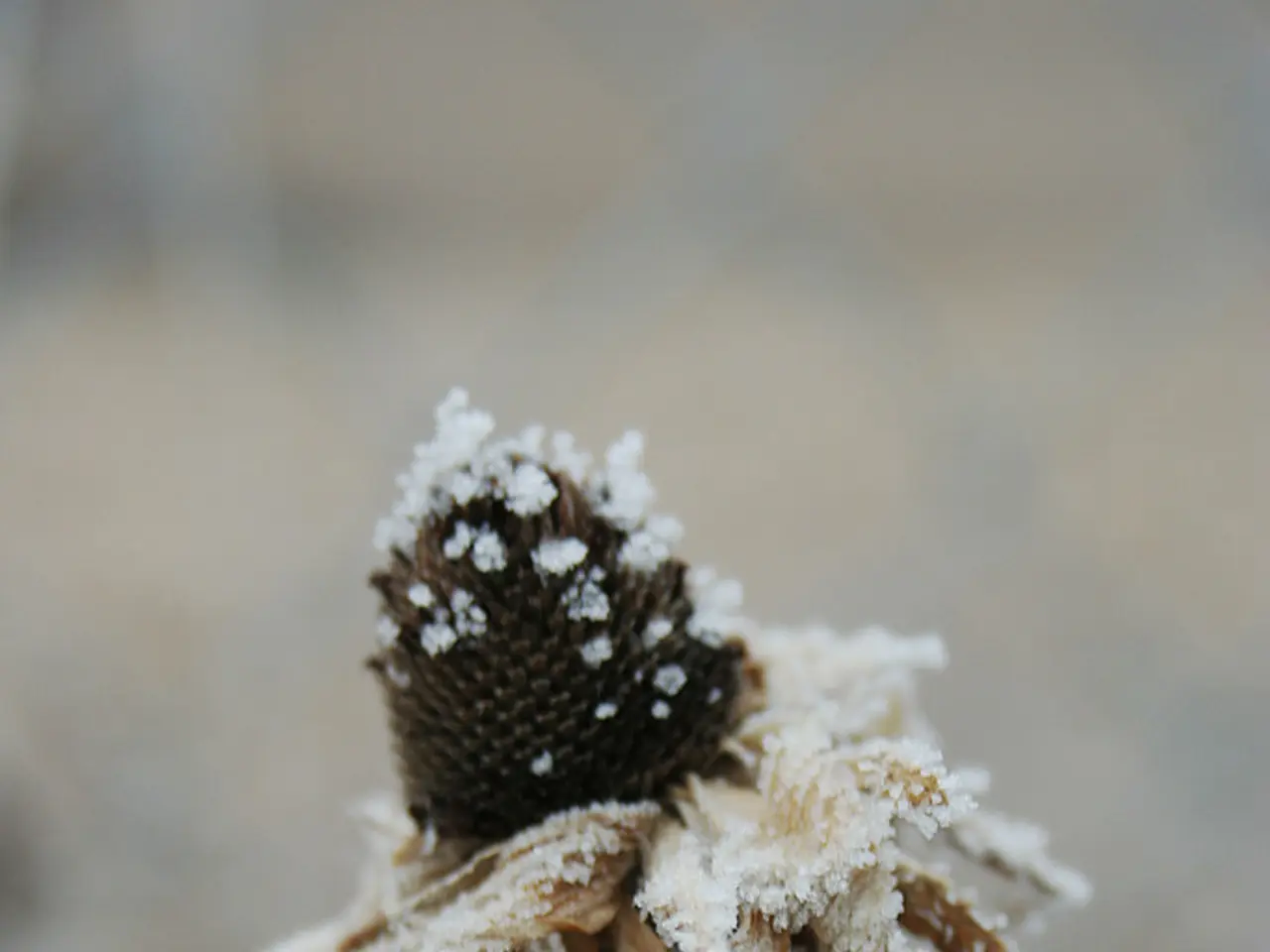Covering Plants with Burlap to Shield Them from Frost Damage
Burlap covers have become a popular choice among gardeners for protecting their plants during the winter season. This coarse, woven fabric made from natural fibers offers a cost-effective and accessible solution for both small-scale gardeners and commercial growers.
Using burlap as a plant cover helps mitigate frost damage by providing a breathable, insulating layer that protects plants from freezing temperatures without trapping moisture. Burlap acts as an antifreeze cloth, shielding plants like outdoor potted plants, fruit trees, and shrubs from frost by loosely covering them and preventing cold air and frost from settling directly on the foliage.
Key points about burlap’s frost protection include its breathability, insulation, flexibility, and durability. Burlap allows air and moisture to pass through, reducing the risk of moisture buildup that can harm plants. When draped loosely and extending to the ground, burlap traps residual warmth from the soil, creating a slightly warmer microclimate that reduces frost damage. Burlap covers can be supported with stakes to avoid direct contact with leaves, minimizing frost bite. Burlap fabric in weights like 7oz or 10oz is sturdy enough to serve as frost blankets yet porous enough for breathability.
Burlap covers also trap a layer of air around plants, acting as a buffer against sudden temperature changes. They prevent moisture from directly landing on plants, keeping them dry and safe from the icy grasp of frost. However, it's important to monitor moisture levels around plants covered with burlap to prevent excessive wetness that can promote fungal growth and damage plants.
In addition to frost protection, burlap covers conserve moisture in the soil, preventing evaporation and reducing the need for frequent watering. They create a shaded environment, shielding plants from excessive sunlight and preventing sun-related damage. Burlap provides insulation, helping regulate temperature and protect plants from extreme cold or heat.
Maintaining burlap covers during frosty weather is crucial to ensure they continue to provide effective protection for your plants. Secure burlap covers to prevent them from blowing away in strong winds and keep them firmly in place. Check for damage on burlap covers before frosty weather arrives to prevent cold air from seeping through and reaching plants.
Frost events can delay planting schedules, reduce crop yields, and affect food security and economic stability in agricultural regions. As such, using natural solutions like burlap covers to protect plants from frost can help maintain crop yields and ensure food security during the winter season.
References:
[1] The Spruce, (2021), Burlap for Frost Protection: How to Use Burlap to Protect Plants. [Online] Available at: https://www.thespruce.com/burlap-for-frost-protection-3106312
[2] Garden Myths, (2021), Burlap for Frost Protection: Myth or Fact? [Online] Available at: https://www.gardenmyths.com/burlap-for-frost-protection-myth-or-fact/
[3] HGTV, (2020), How to Protect Plants from Frost: 10 Tips. [Online] Available at: https://www.hgtv.com/design/outdoors/gardens/how-to-protect-plants-from-frost
[4] The Old Farmer's Almanac, (2021), Protecting Plants from Frost: How to Use Burlap. [Online] Available at: https://www.almanac.com/plant/protecting-plants-from-frost-how-to-use-burlap
[5] Fine Gardening, (2020), The Best Frost Protection for Plants. [Online] Available at: https://www.finegardening.com/article/the-best-frost-protection-for-plants
Home-and-garden enthusiasts can employ burlap covers as a part of their winter gardening strategies, leveraging this cost-effective and natural fabric to safeguard their plants from frost damage. By using burlap as an antifreeze cloth for outdoor potted plants, fruit trees, and shrubs, gardeners create insulating layers that protect their foliage while allowing necessary air and moisture to pass through.




